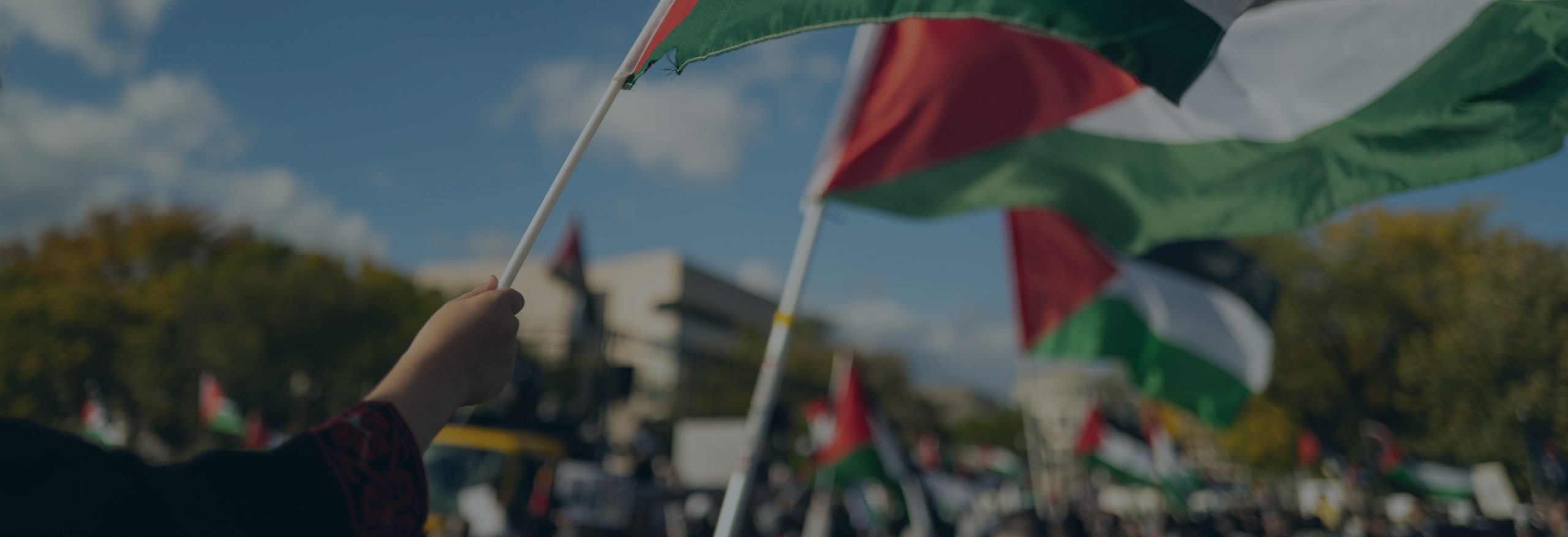Evacuations from High-Risk Locations Call +44 (0)1202 308810 or Contact Us →
Protests Expected Amidst Israel-Hamas War Anniversary

Major Cities Prepare for Potential Disruptions as Protests Loom
Intelligence cut off: 11:00 GMT 4th of October 2024
On 7 October 2023, the Palestinian group Hamas launched an offensive from the Gaza Strip into southern Israel, killing 1200 – mostly civilians – and taking more than 200 hostages. The attack represented the start of the ongoing Israel-Hamas war. As of October, Israeli troops have been carrying out protracted operations within the Gaza Strip to destroy Hamas and free the hostages that remain in Hamas captivity. More than 41,000 Palestinians – a majority being civilians – have died over almost a year of conflict, and much of Gaza’s residential and public infrastructure has been destroyed or severely damaged, leading to a severe humanitarian crisis.
In late September, the conflict in the Middle East entered a new stage. Following a series of decapitation attacks – which resulted in the death of Hezbollah leader Hassan Nasrallah and other key “Axis of Resistance” figures – which were preceded by a (likely) sophisticated Mossad operation involving the detonation of thousands of communication devices used by Hezbollah members, Israeli forces launched a limited ground offensive into southern Lebanon. On 1 October, Iran – a key Hezbollah ally – responded by launching a barrage of approximately 200 ballistic missiles against Israel. Currently, Israel Defence Forces (IDF) units continue operations in Lebanon.
The war has driven a significant increase in international attention towards the broader Israel-Palestine conflict and has been a fundamental motivating factor for numerous cases of civil unrest, as well as political violence and terrorism. With the anniversary of the start of the conflict, and its recent expansion to southern Lebanon, further large-scale unrest is scheduled to take place in dozens of capitals and large urban centres.
Upcoming Global Protests: EMEA, AMER, and APAC Regions
In the past weeks, multiple protests have been announced in the period between 5 and 10 October. This period is both highly visible and highly significant from a cultural and political perspective: it begins on the day following Rosh Hashanah, and will also end on the eve of Yom Kippur, thus occupying the space between the two holiest days of the Jewish religious calendar.
Diverse Movements Fueling Global Protests
It would likely be incorrect to speak of a single cohesive international pro-Palestine movement, or of any specific ideology associated with it. Past protests and initiatives, as well as the ones scheduled to take place over the next weeks, have been planned by a series of diverse actors, including groups espousing ideologies that theoretically do not overlap with the Palestinian cause.
This high level of intersection between different local initiatives likely underscores a high level of transnational communication and planning, also facilitated by social and digital media.
In addition to numerous pro-Palestine protests, there also are a large number of pro-Israel demonstrations planned to coincide with the anniversary of the Hamas attack. More ideologically cohesive, these demonstrations have so far been overall smaller, although their volume and traction has heavily varied depending on local political landscapes.
Civil Unrest Risks Across Europe, Asia-Pacific, and the Americas
Europe, and especially north and west Europe, likely is particularly at risk for civil unrest during the period. Protests have been scheduled to take place in multiple capitals and large cities, including London, Paris, Marseille, Rome, Bologna, Warsaw, Madrid, Amsterdam, Athens, Berlin, Vienna, Malmo and Istanbul.
In the Asia-Pacific region, likewise, protests are expected to take place in cities across Australia, New Zealand, India, Japan, Pakistan, Bangladesh, Thailand, the Philippines and South Korea.
The United States will also highly likely be a hotspot for civil unrest around the anniversary of the start of the conflict. American universities spearheaded the global pro-Palestine movement, and almost certainly popularised certain forms of protests – including campus “encampments” – that were replicated by universities in Europe and Oceania.
Government Responses and Restrictions on Protests
The majority of these initiatives have been developed at the activist group and civil society level. However, the high political relevance of the anniversary has likely driven an uncommon degree of government and party involvement in the promotion (or opposition) to the event.
In particular, there are at least two notable cases of direct government intervention to prevent organised unrest from going ahead. In Australia, the police and government initially banned a solidarity “vigil” planned for 7 October in Sydney. The ban on the event – Prime Minister Anthony Albanese called the planned demonstration “incredibly provocative” – was eventually overturned following an agreement between the organisers and police.
In Italy, the government did not grant permission for a planned gathering on 5 October in Rome, prompting a severe backlash from both the pro-Palestine activists (who have reiterated their intention to carry out the demonstration) and the left-wing opposition.
In addition to these government-imposed bans, other protests scheduled to take place on university campuses have been prohibited by academic administrators.
Civil Unrest to Pose High Secondary Threats
There is a high likelihood that there will be an increase in civil unrest in the 5-10 October period (and possibly beyond 13 October, the anniversary of the beginning of Israeli operations in Gaza). Further developments in the conflict, especially in the Lebanese front, could drive rapid changes in the volume and scope of civil unrest incidents.
Increased Security Risks in European Cities
European cities are likely to be particularly at risk. The choice to hold pro-Palestine protests overlapping with the anniversary of the 7 October Hamas attack in southern Israel will likely be perceived as a provocation and almost certainly result in an increased security risk level at the protest locations.
There is a high likelihood of pro-Israel counterprotest groups seeking to disrupt the pro-Palestine gatherings. Likewise, there is a high likelihood of clashes breaking out between protesters and police, especially in cities where clashes have previously occurred (such as Paris), and in those where the protests have not been approved.
The scope and high visibility of the demonstrations are also likely to result in an increased threat from lone-wolf terrorism, either targeting the protesters or high-visibility targets in protest locations, including government buildings and places of worship. Moreover, there is a realistic possibility of foreign actors seeking to leverage European open media spaces to encourage violence, also through the spread of disinformation, in a way similar to the recent Southport riots in the United Kingdom.
Asia-Pacific Region: Comparatively Peaceful Protests
Conversely, the majority of protests throughout the Asia-Pacific region are likely to be comparatively more peaceful. Travel disruptions are still a realistic possibility in major city centres due to heightened security measures.
Potential for Unannounced Protests and Violence
In addition to scheduled gatherings, there is a high likelihood of impromptu or not publicly announced protests being staged outside of the embassies and consulates of countries providing political and material support to Israel, such as the US, UK and France. These protests will likely have a greater risk of violence, and especially vandalism targeting diplomatic assets and offices.
Protests Outside Israeli Embassies and in Pakistan
Protests are also highly likely outside of Israeli embassies within the region and have previously been observed in Thailand, South Korea and the Philippines. In Pakistan, two of the country’s largest parties, Jamaat-e-Islami (JI) and the Pakistan Tehreek-e-Insaf (PTI) party have announced joint protests on 7 October that will cross the political divide. Protests are likely to develop outside US diplomatic buildings in Islamabad, Lahore, Karachi, and Peshawar.
Government Responses and Legislative Developments
The threat of clashes between government and police forces and protesters is particularly likely in countries where the executive is considered to be actively opposed to the protest movement. Again, the cases of Australia and, especially, Italy, are exemplary. In the latter, the recent government refusal to approve the demonstration planned for Rome is also compounded by broader legislative developments. In particular, the Italian lower chamber recently passed a new security law, which has been strongly criticised by the opposition for reportedly restricting freedom of protest. These two developments will likely drive significant civil unrest on 5 October and in the coming weeks in large Italian cities.
NAVIGATING CIVIL UNREST SAFELY
Practical Strategies for Ensuring Safety During Protests and Riots
Explore our comprehensive Civil Unrest Guide, designed to equip travellers with essential strategies for navigating protests, riots, and civil unrest. Learn practical tips on how to stay informed, avoid high-risk areas, and respond effectively in crisis situations, ensuring safety and peace of mind while travelling.
